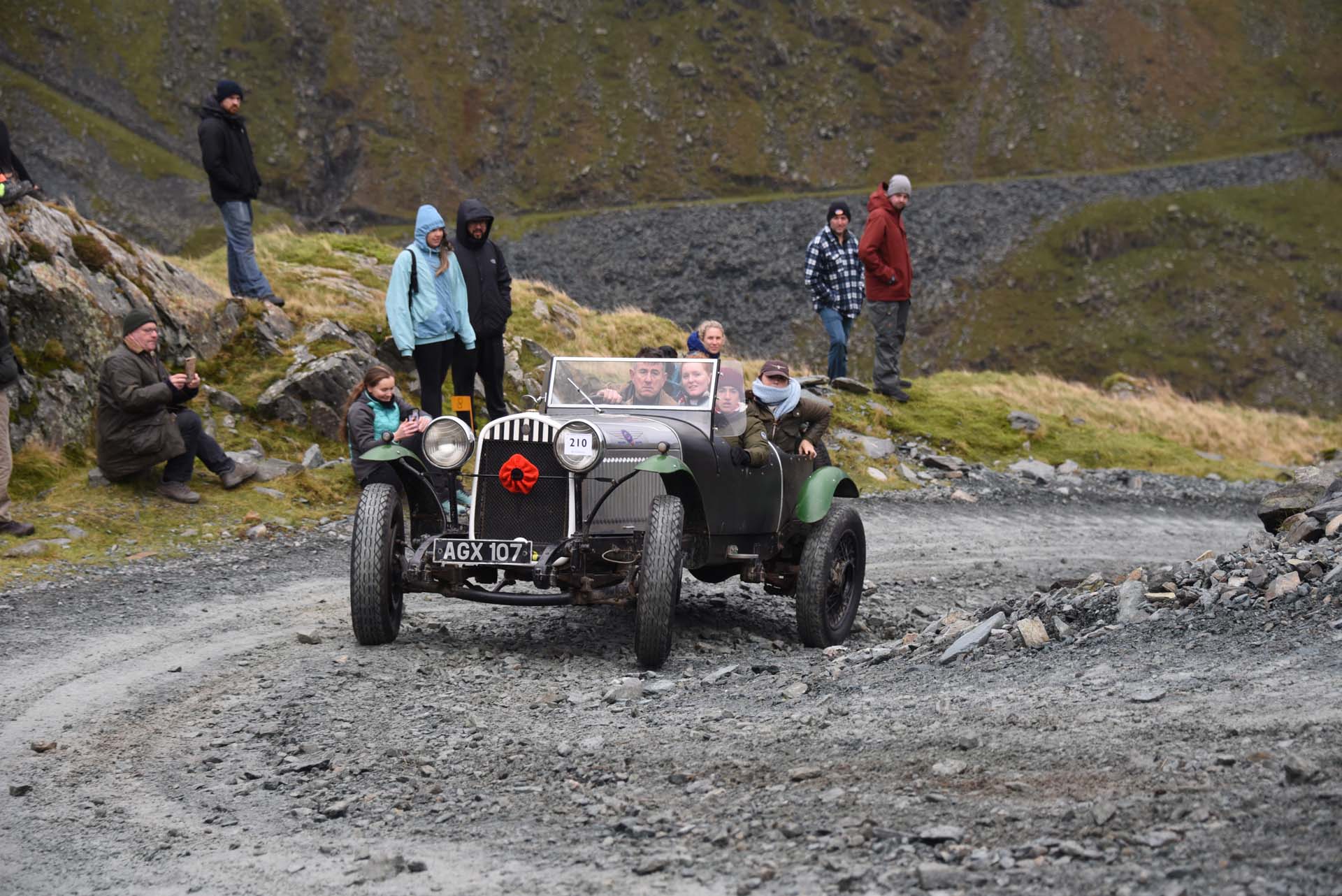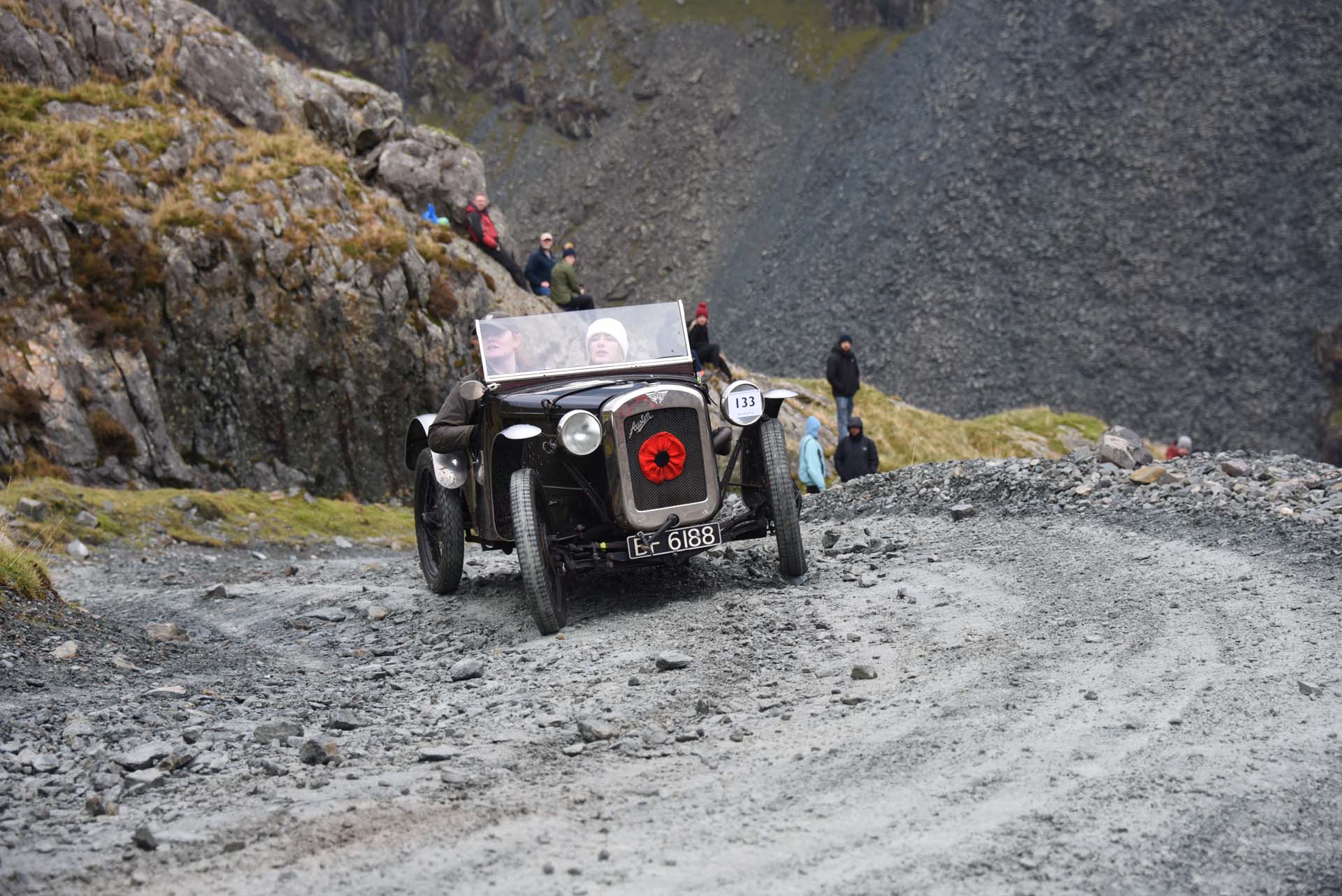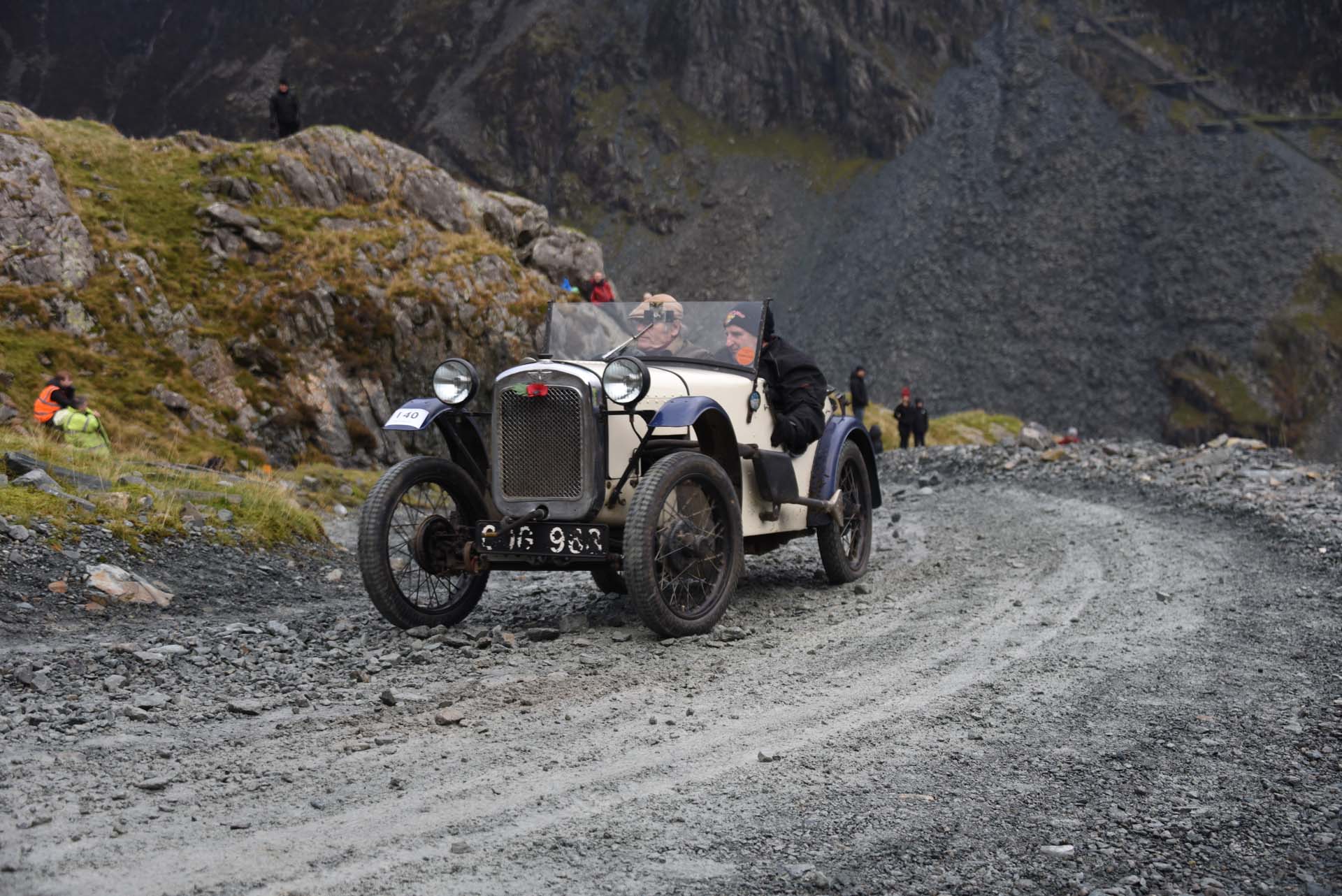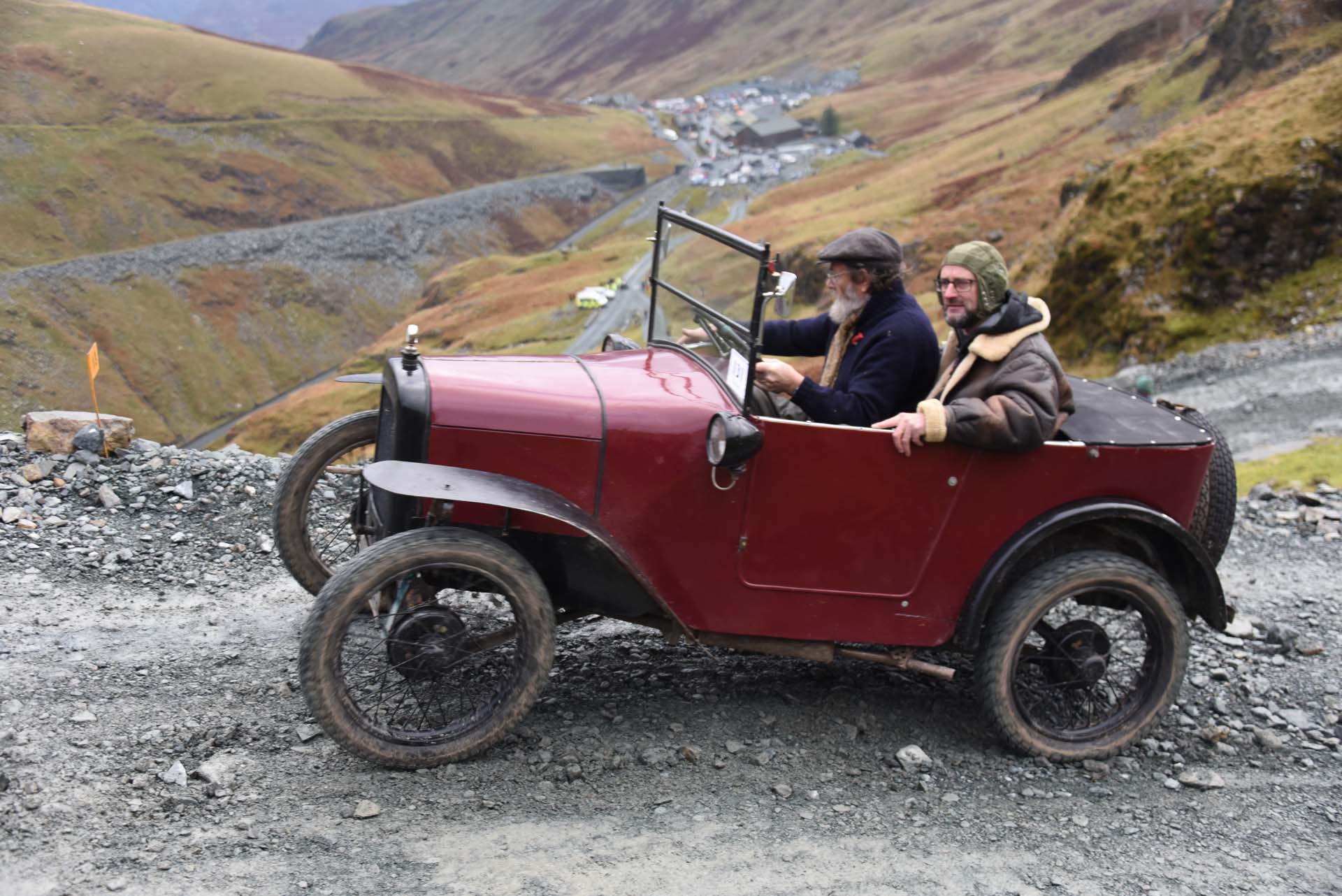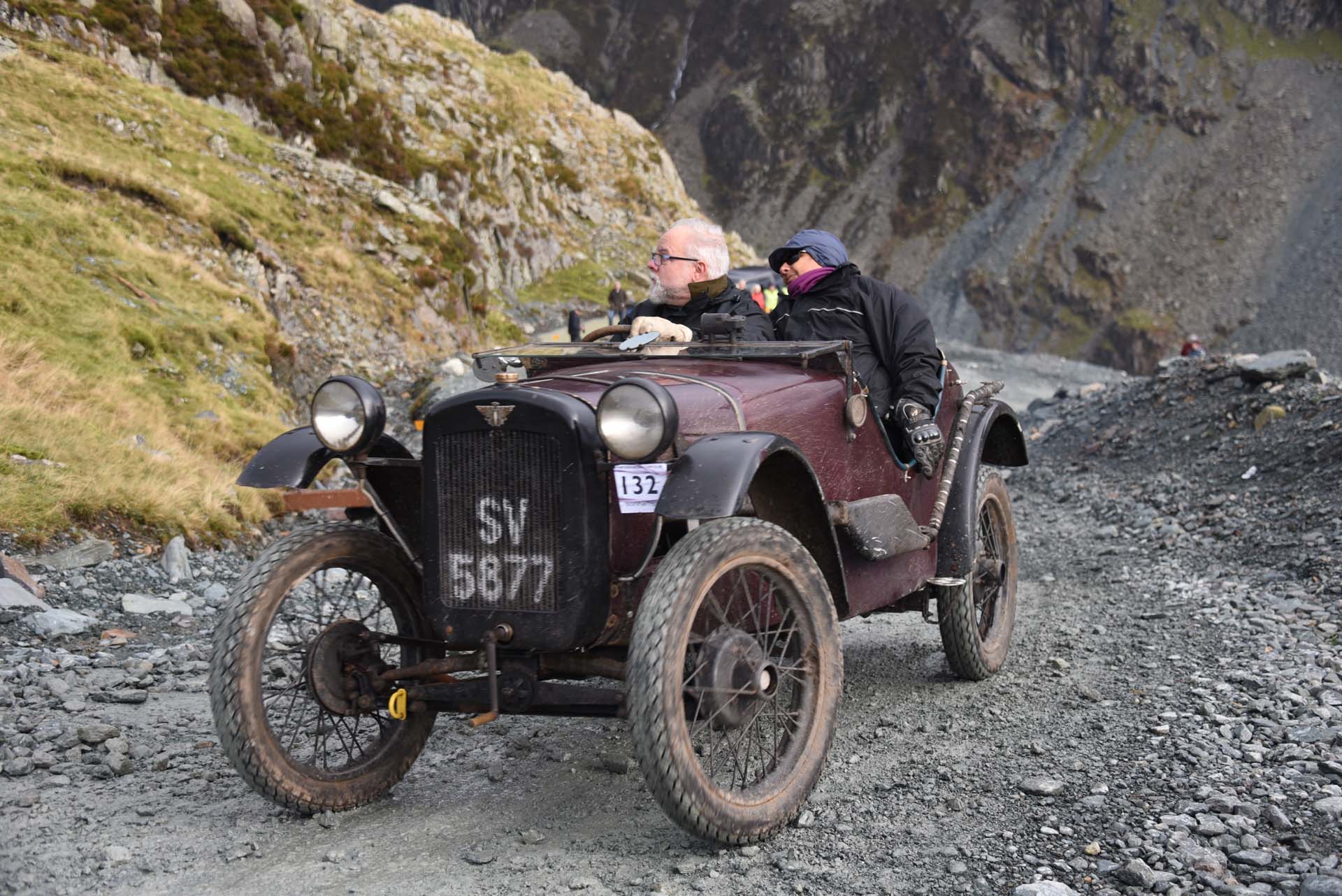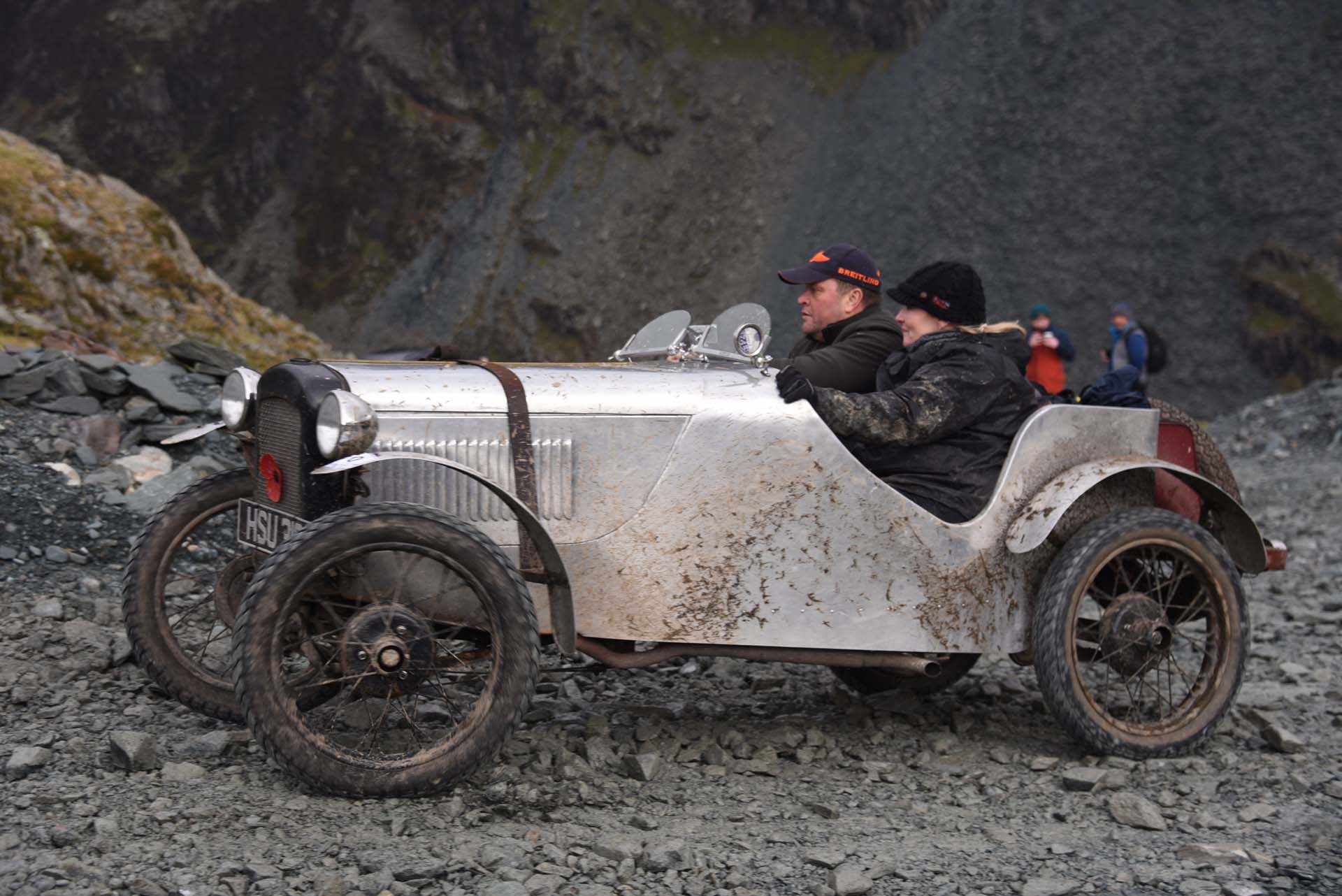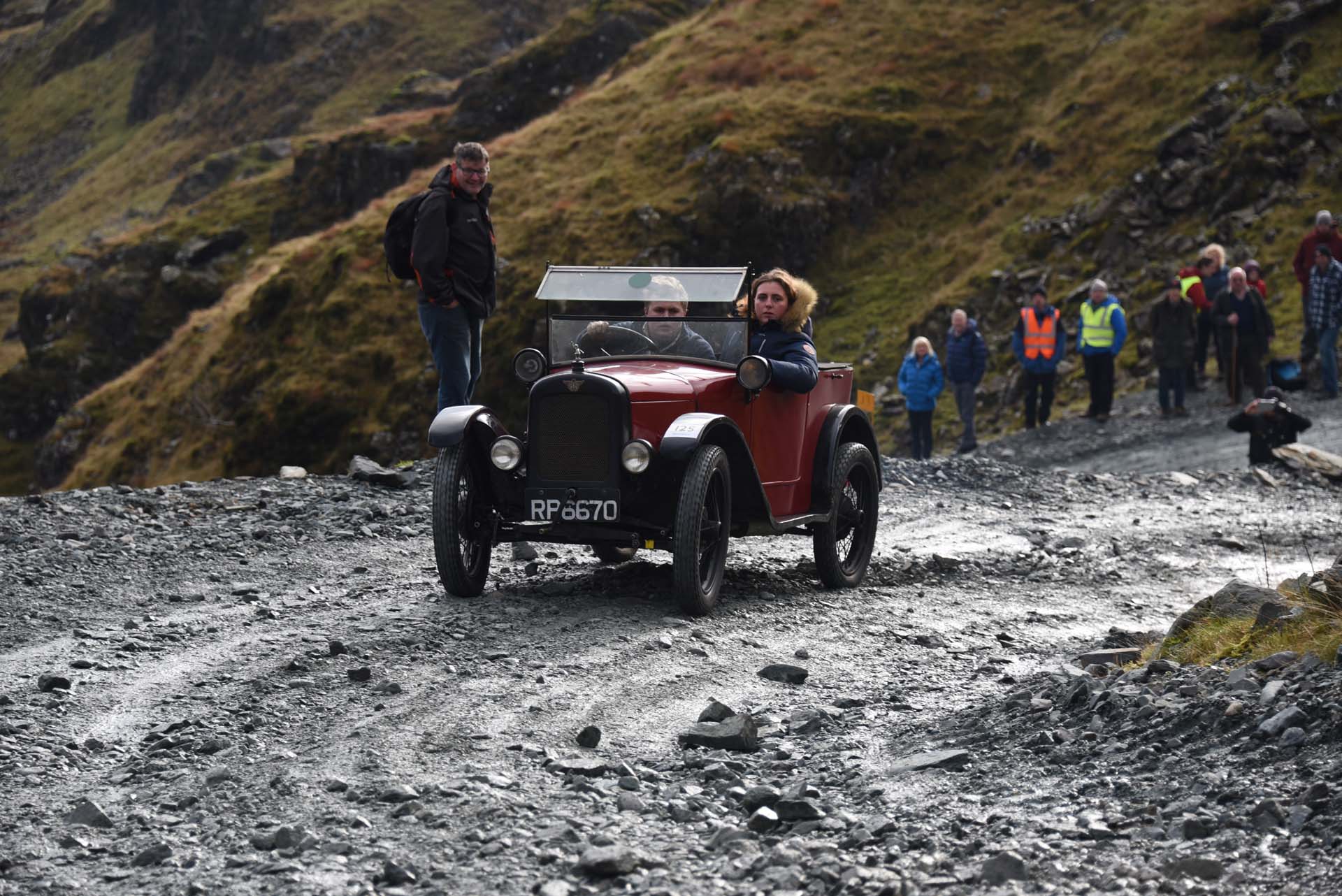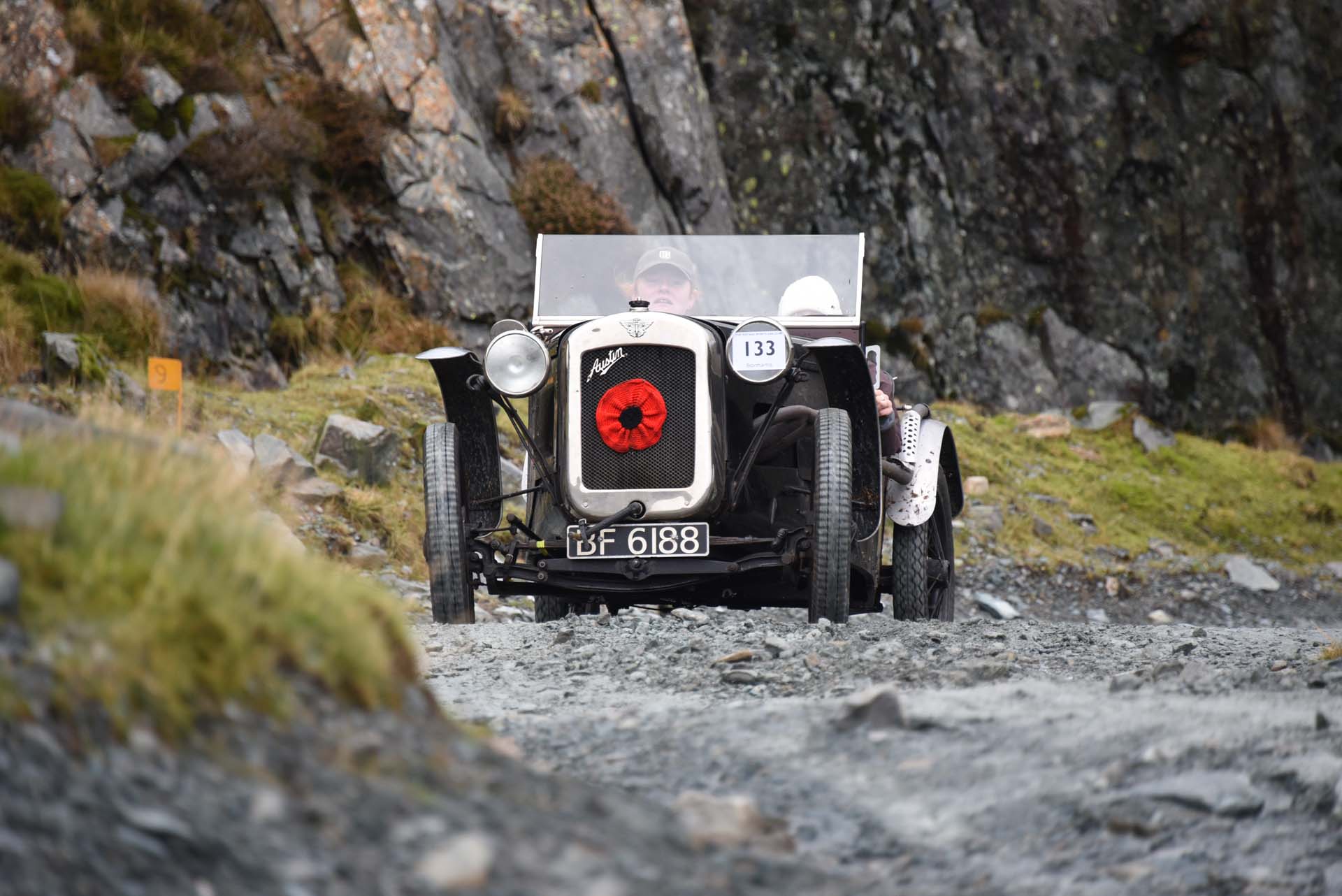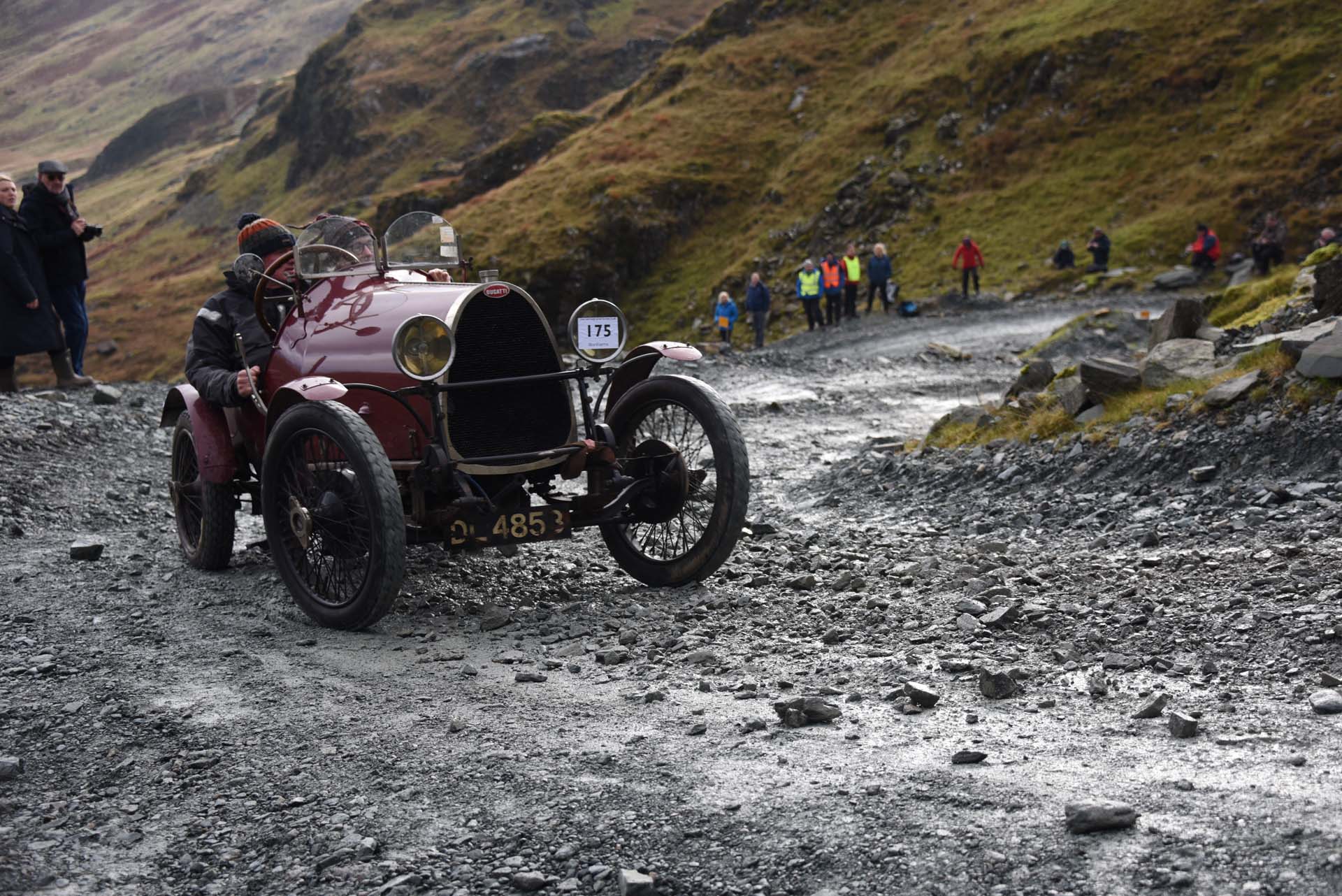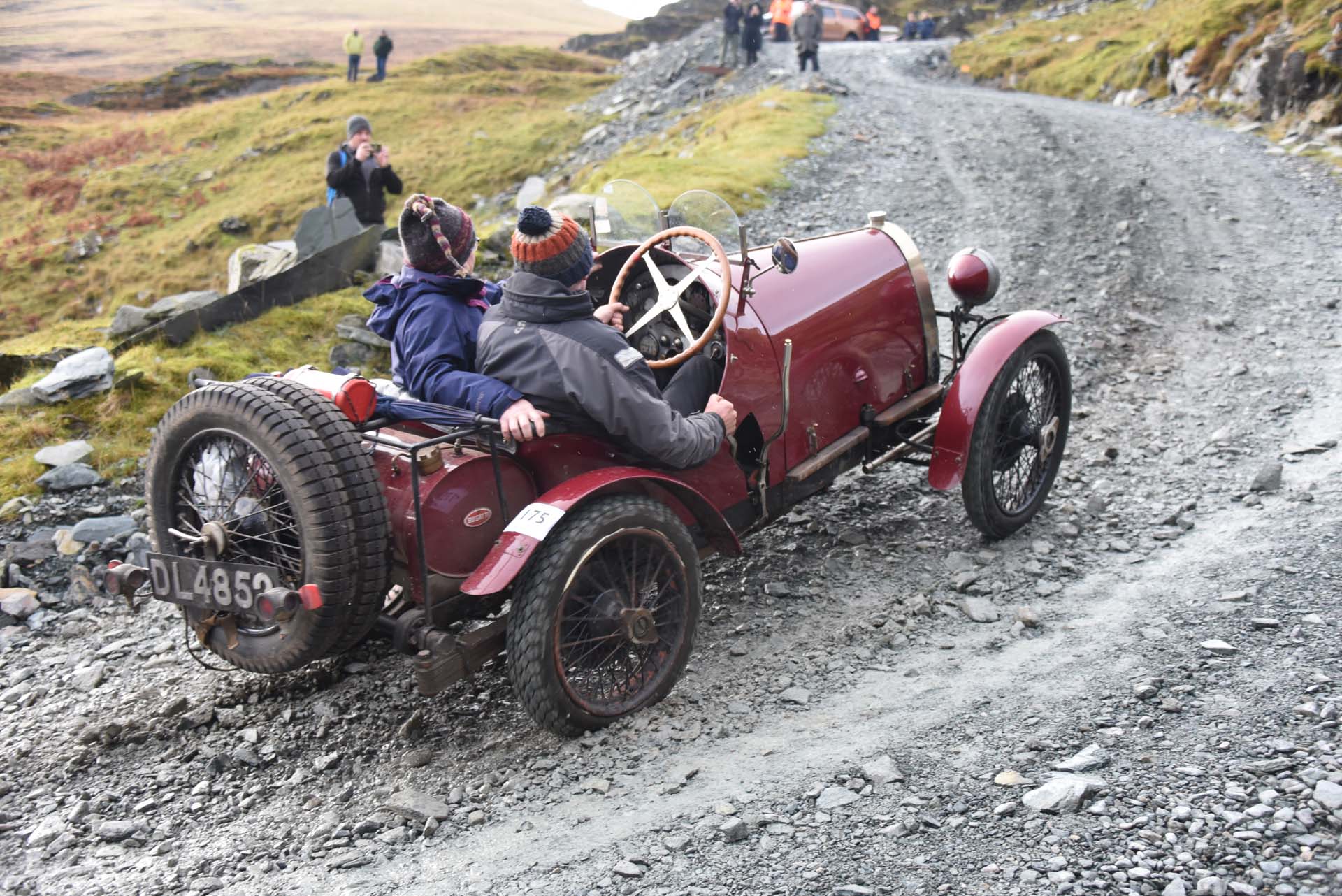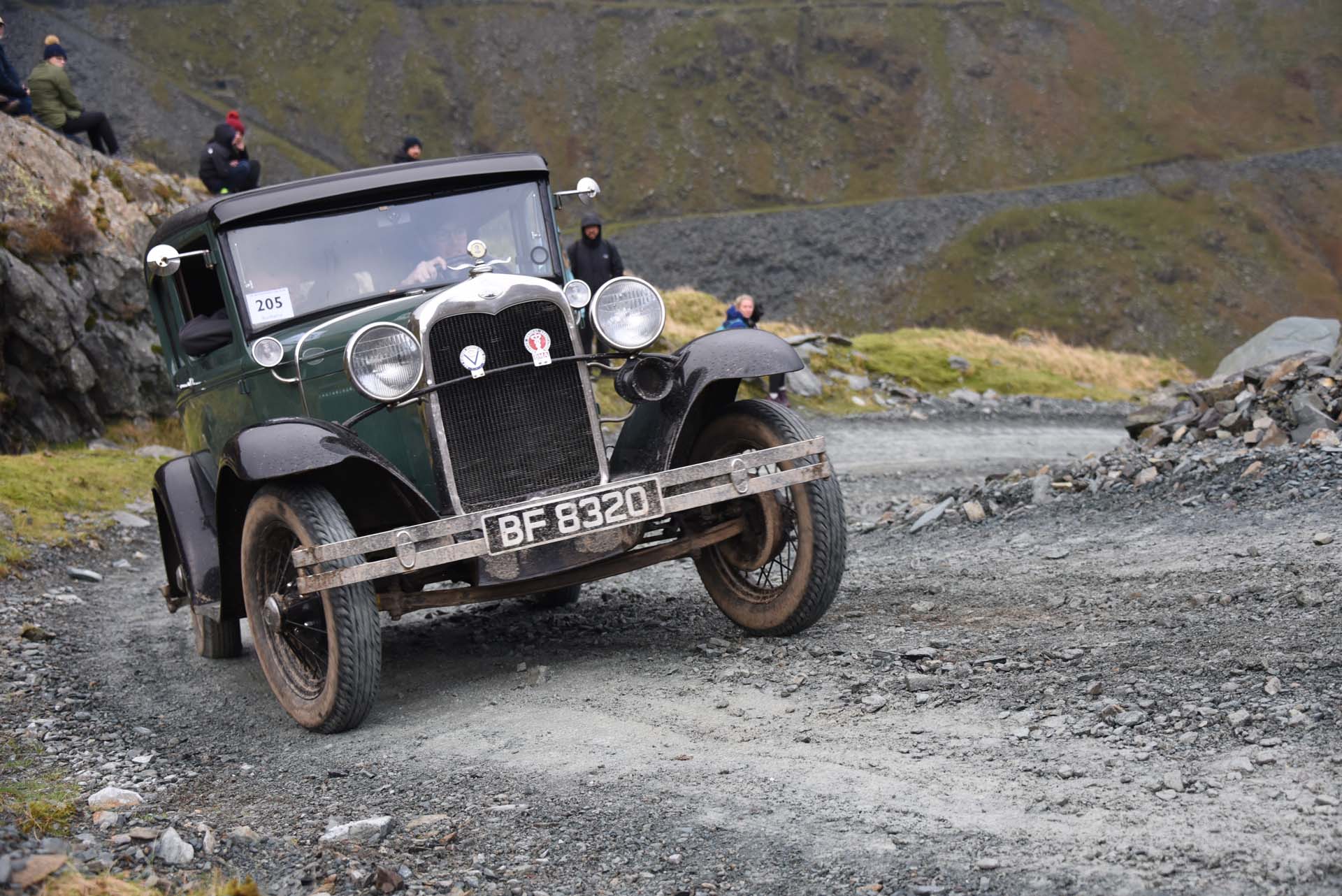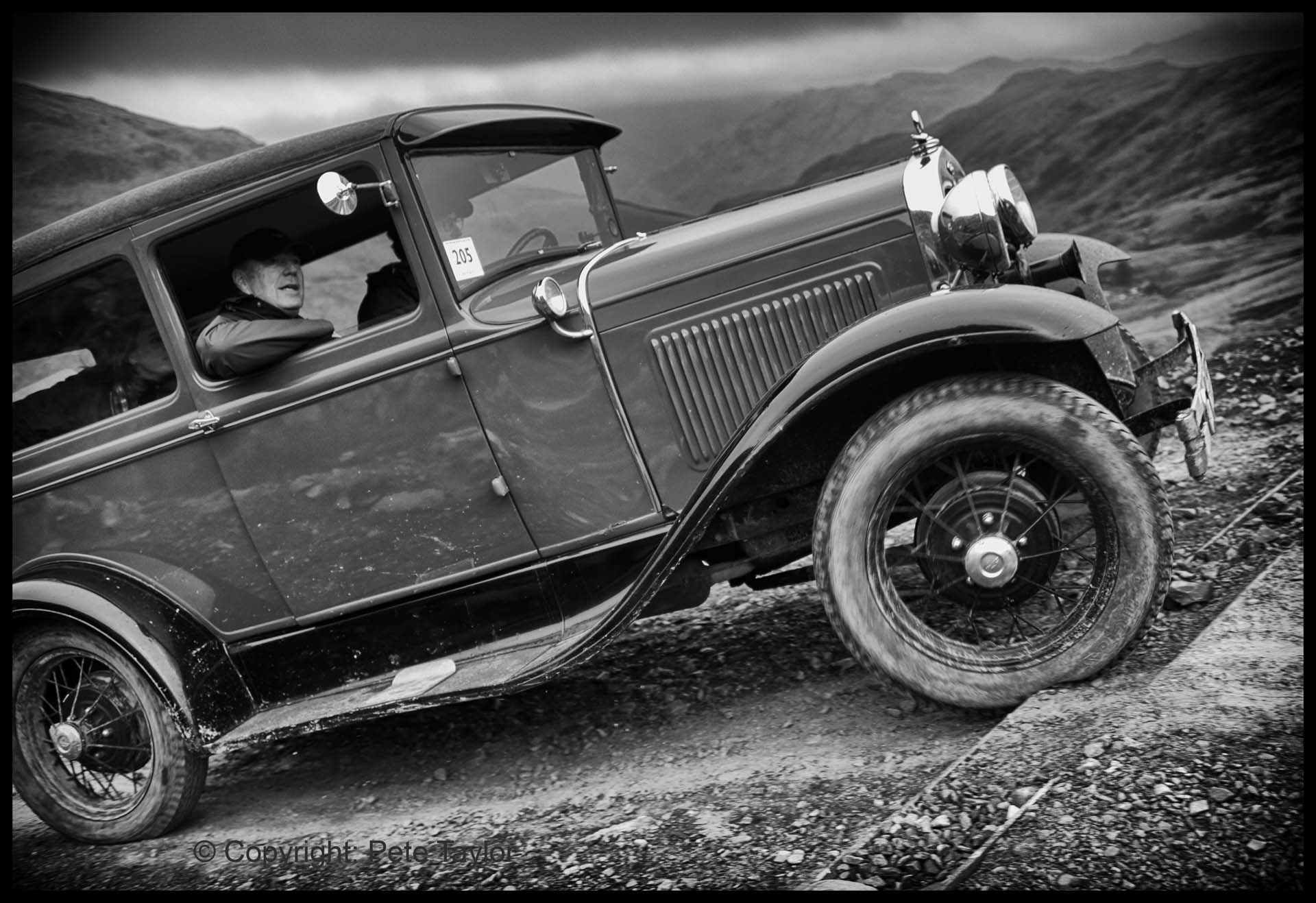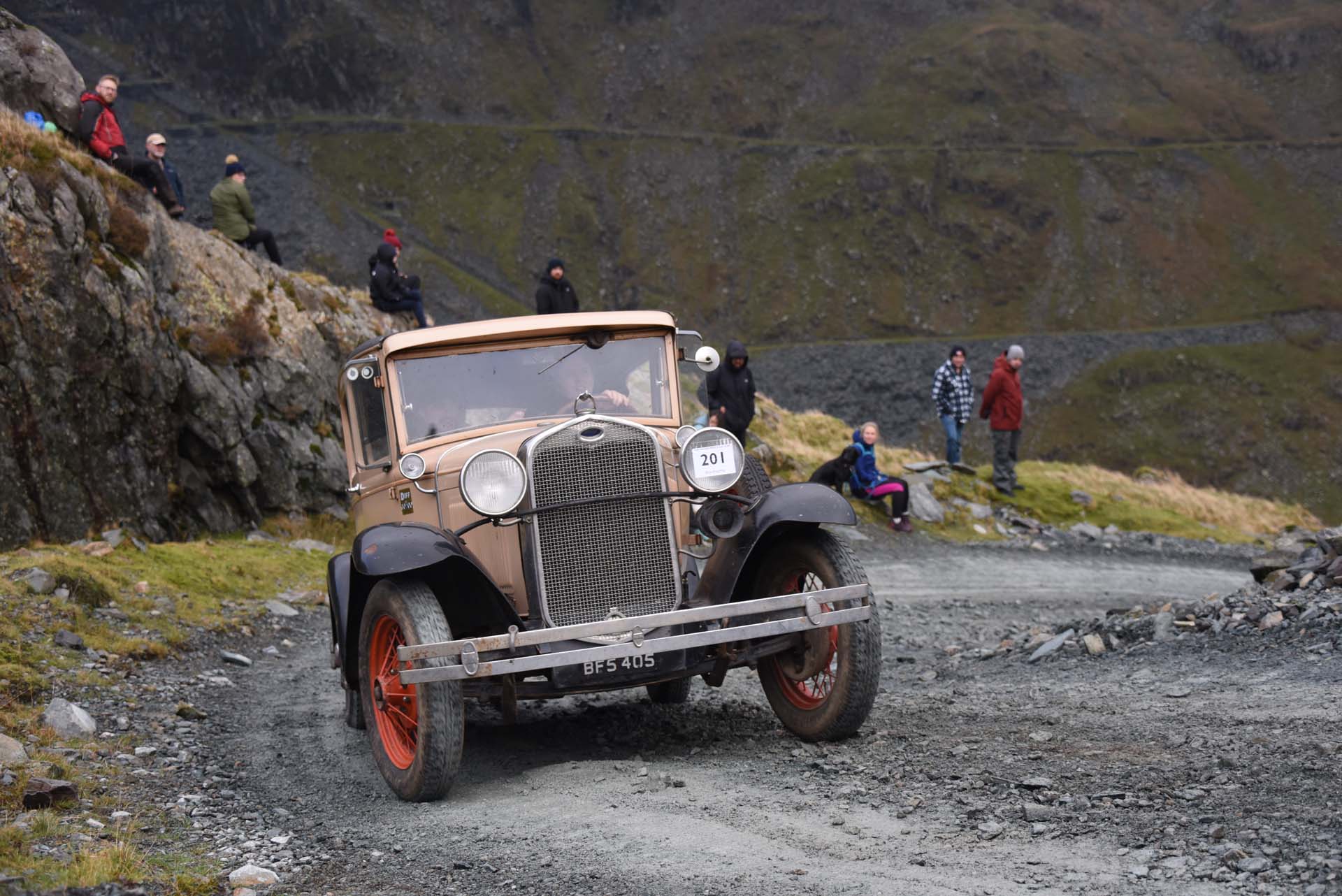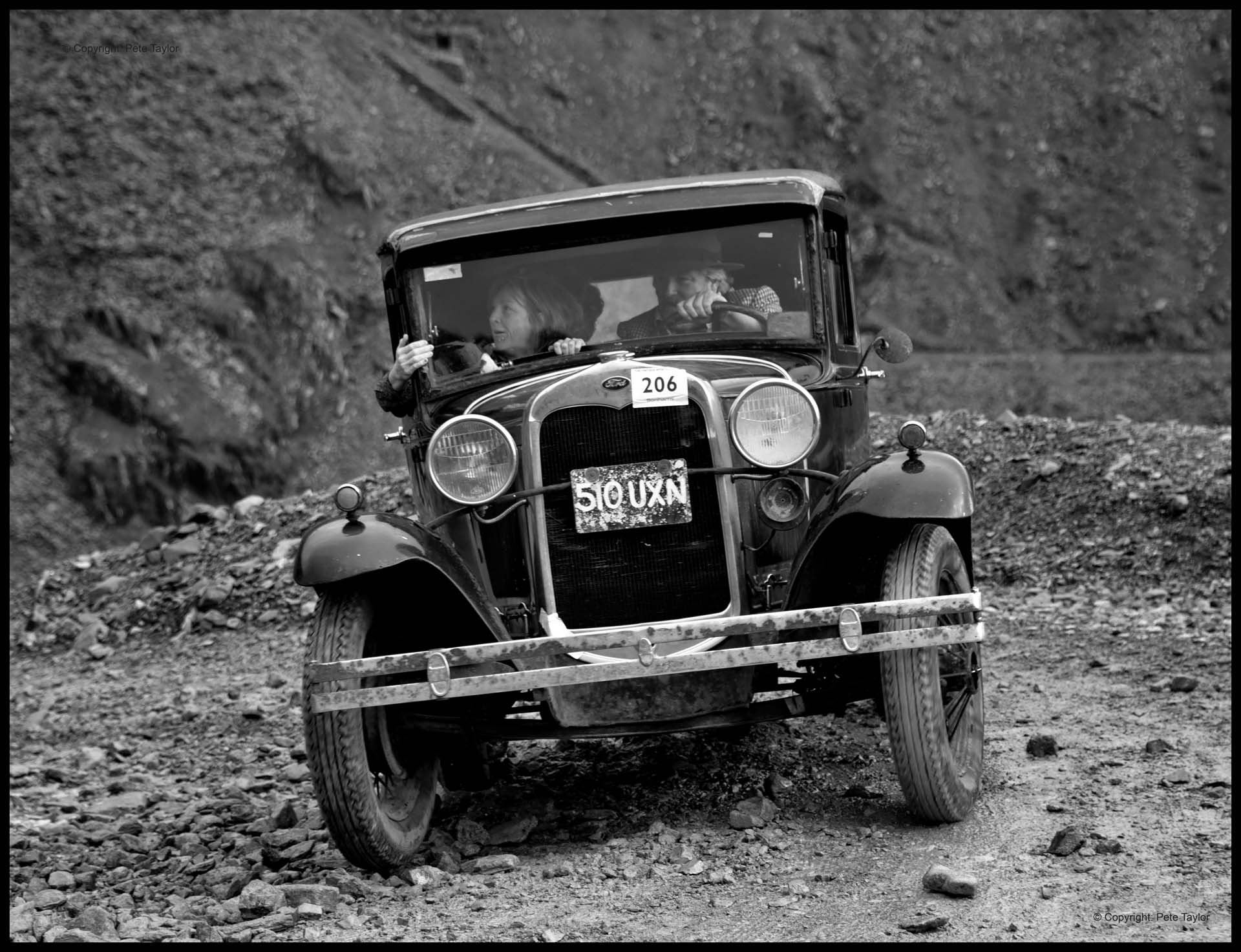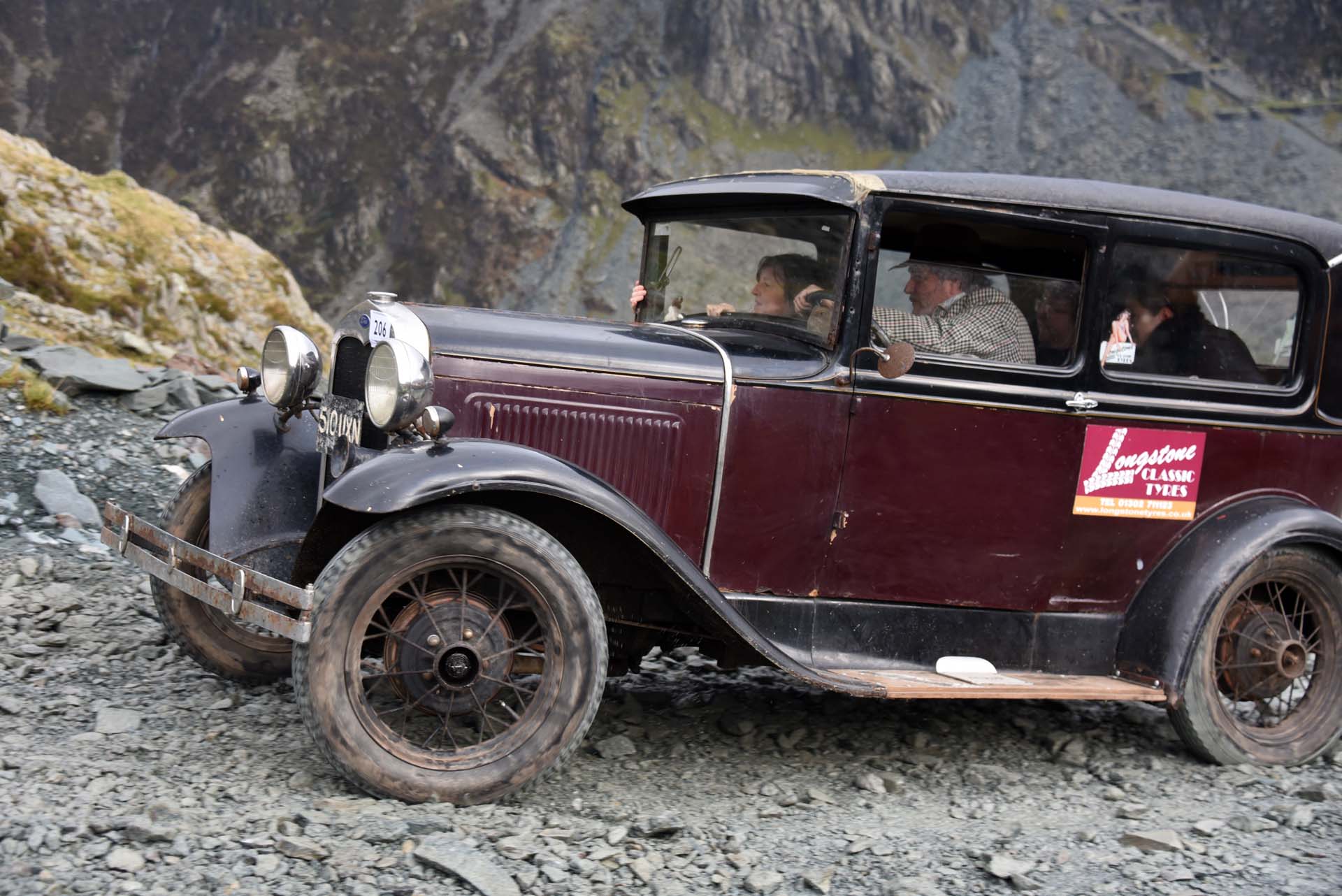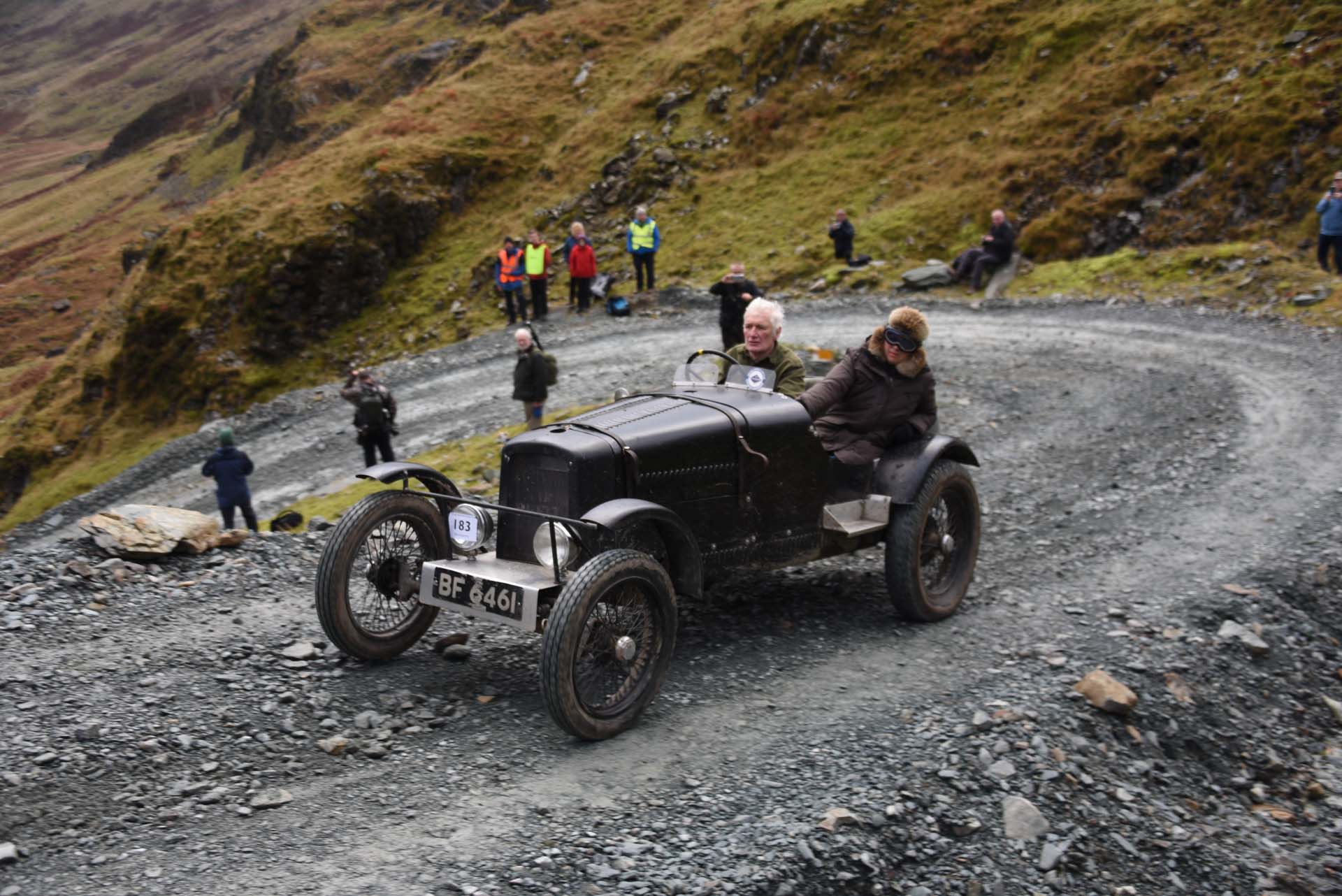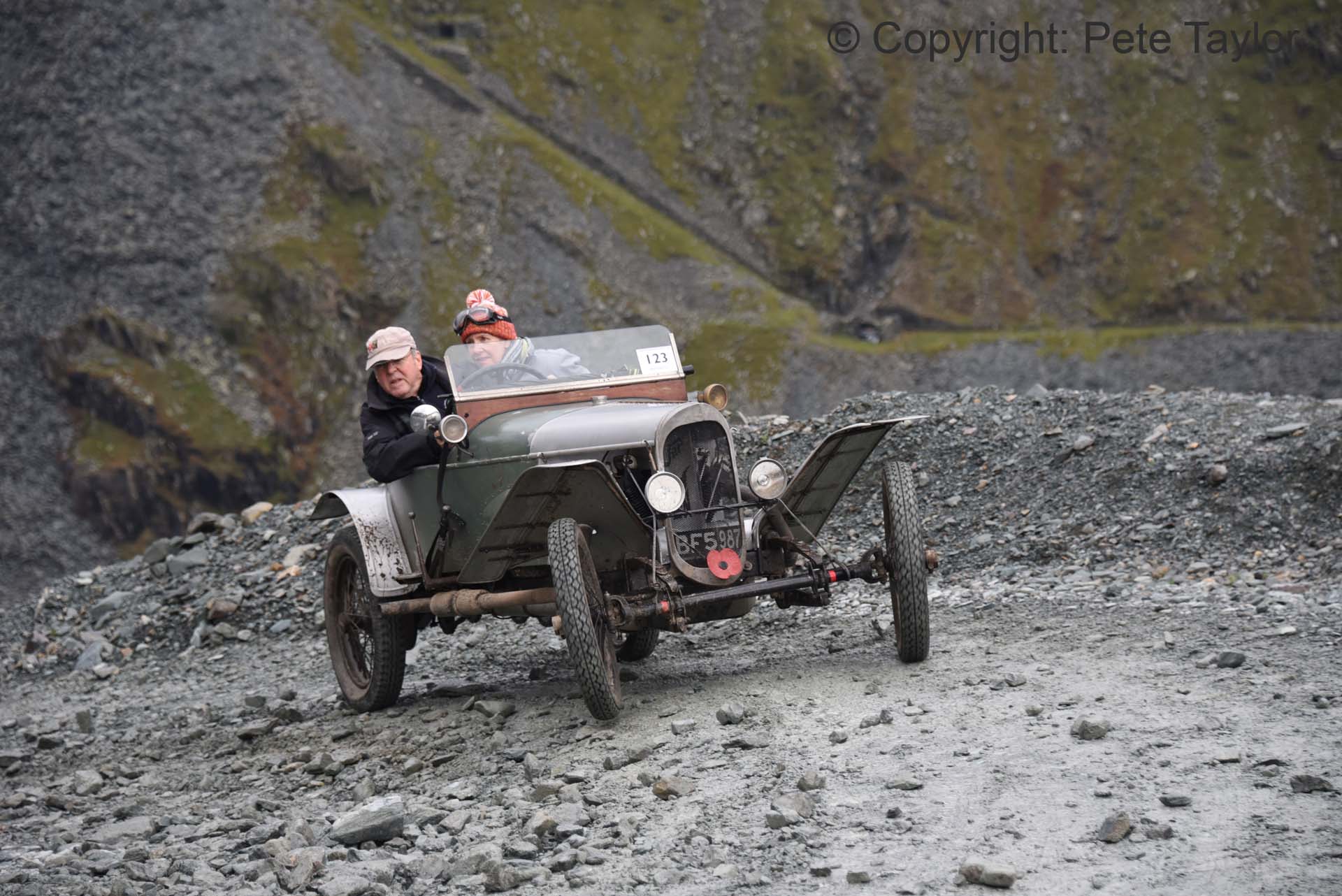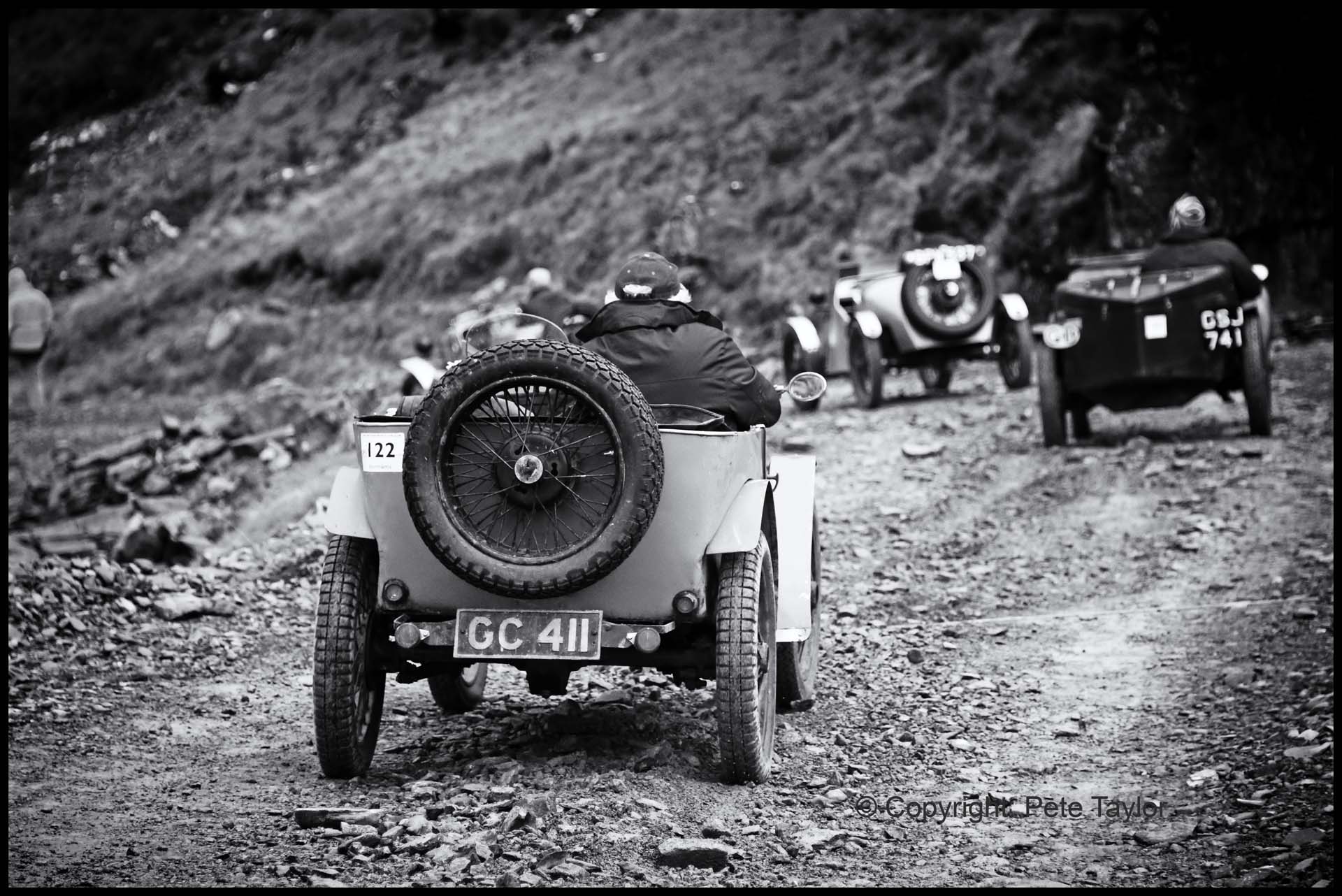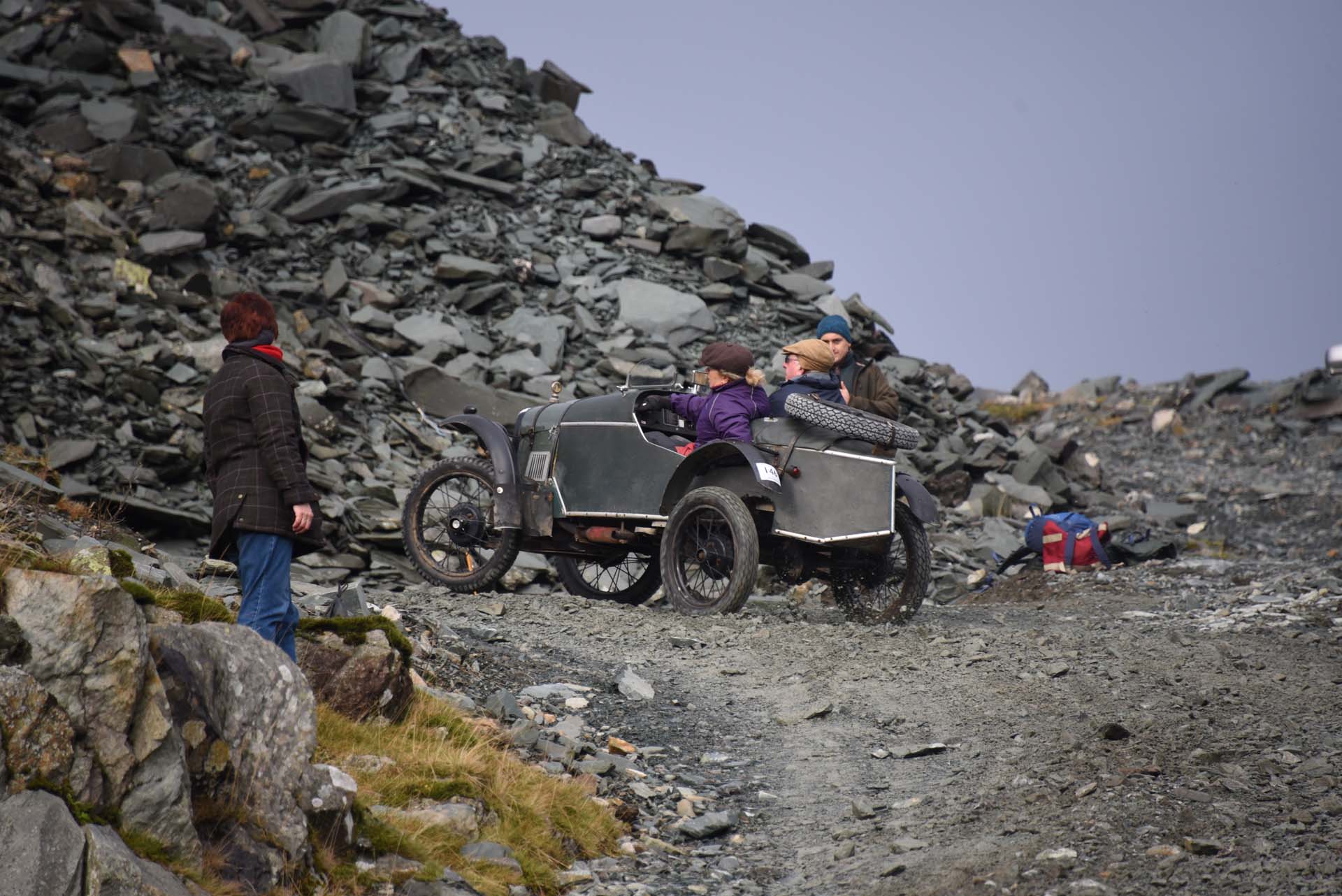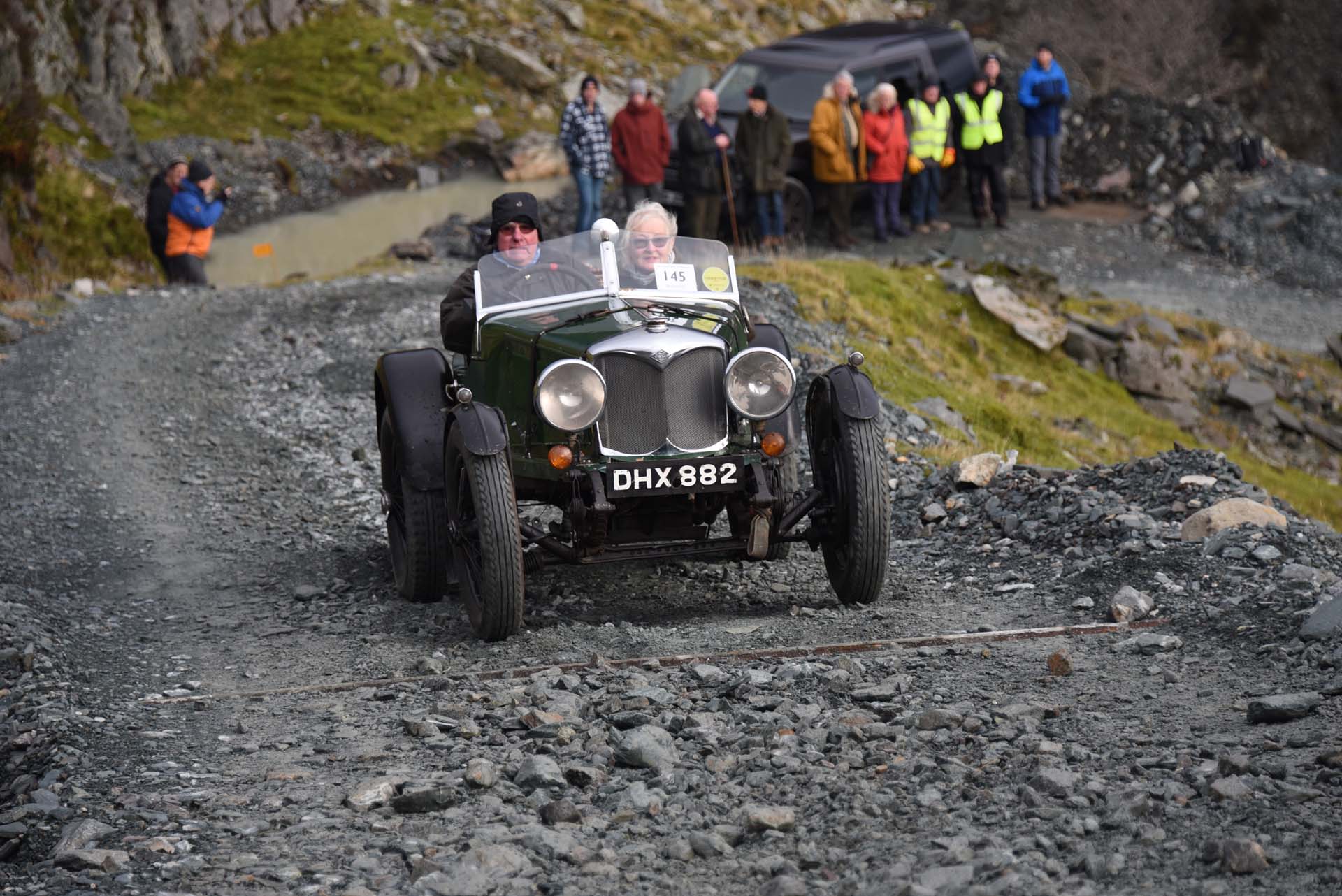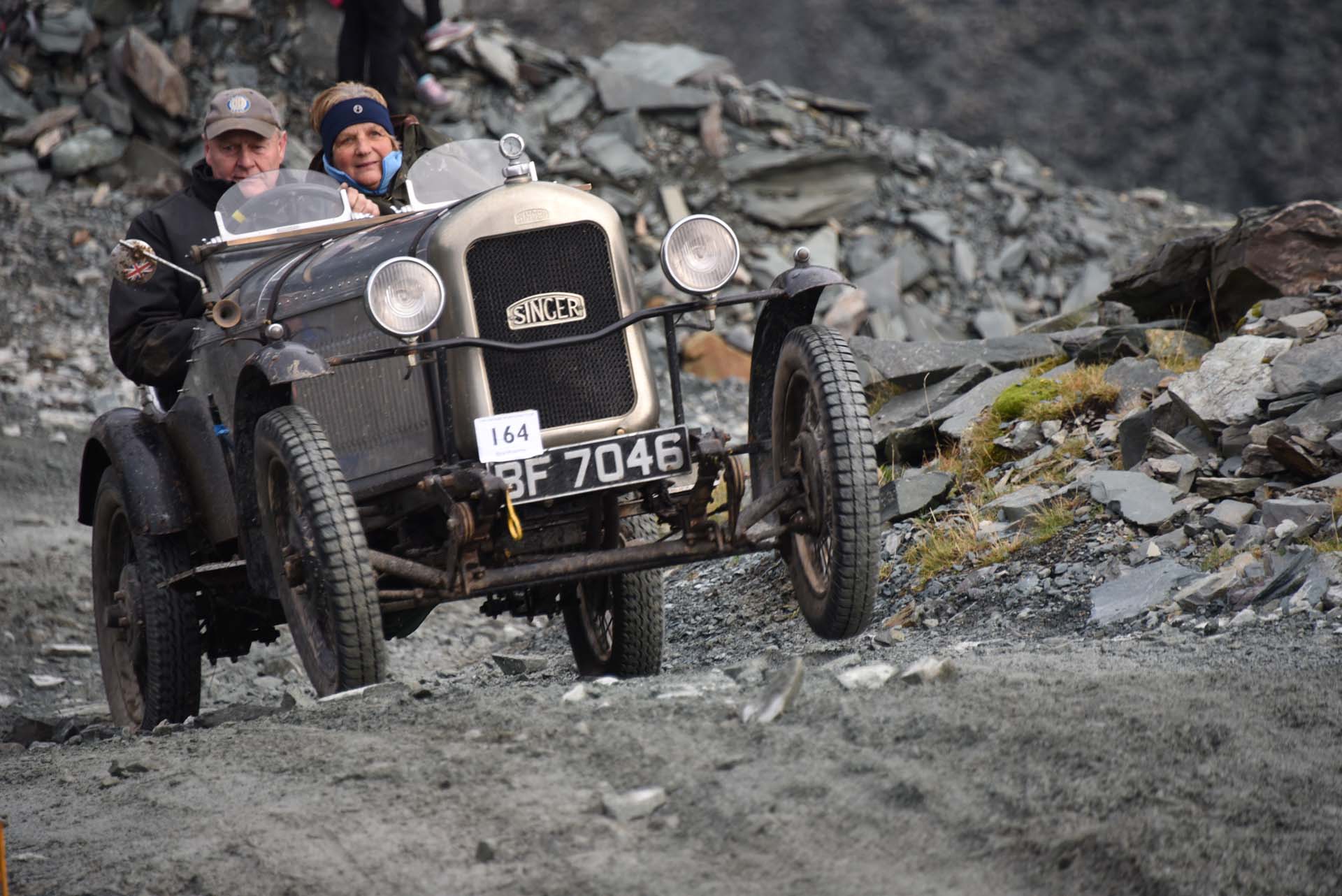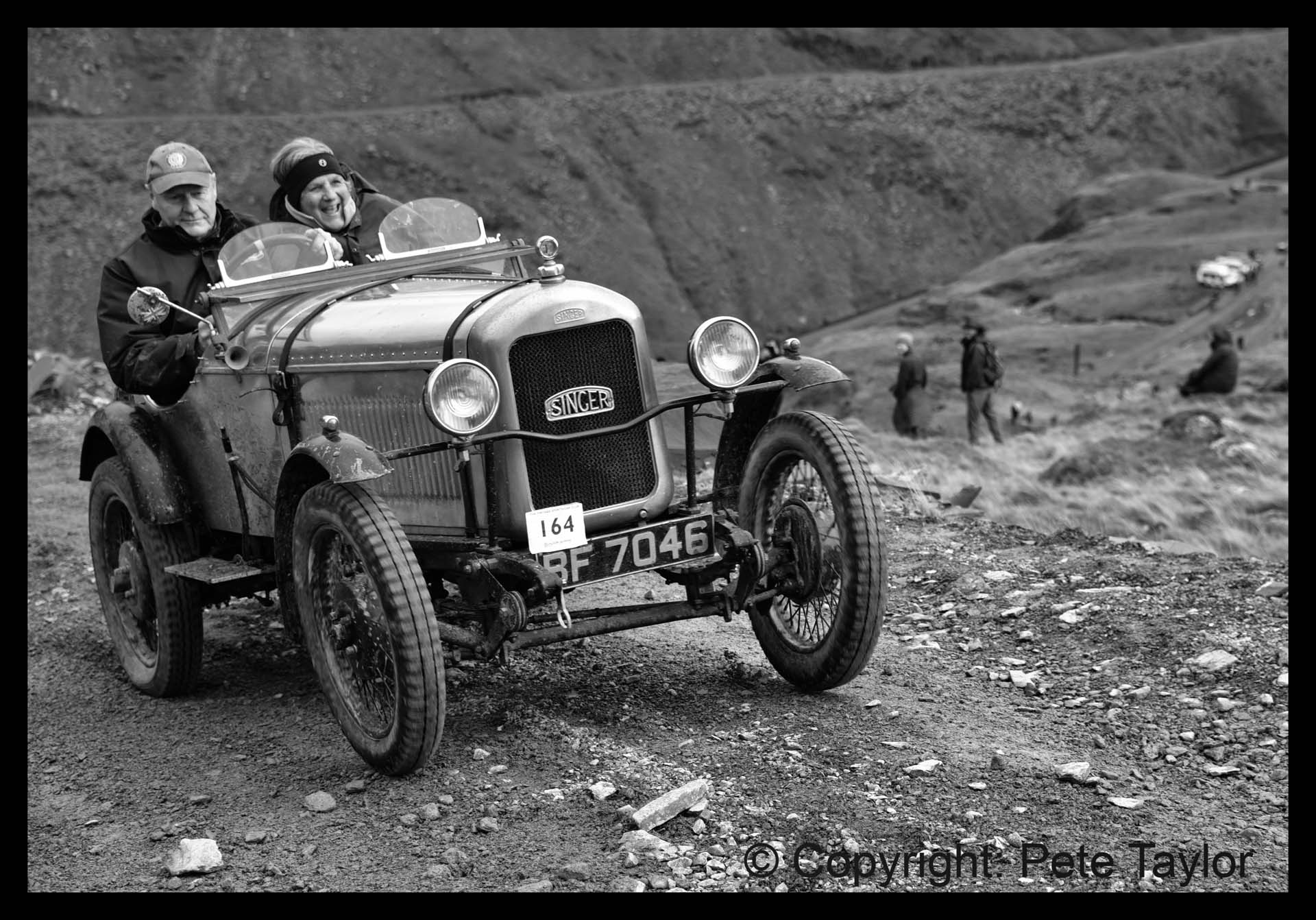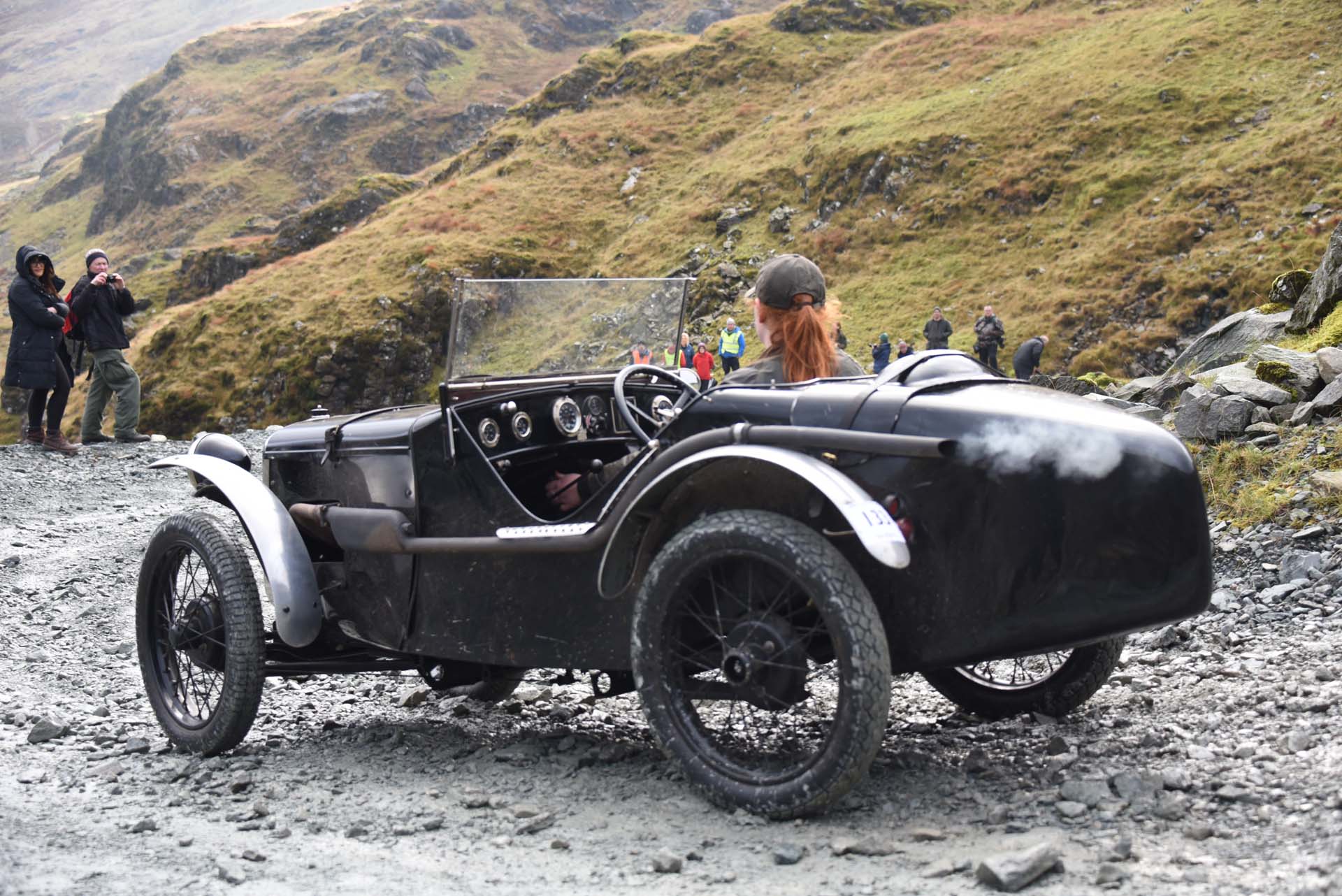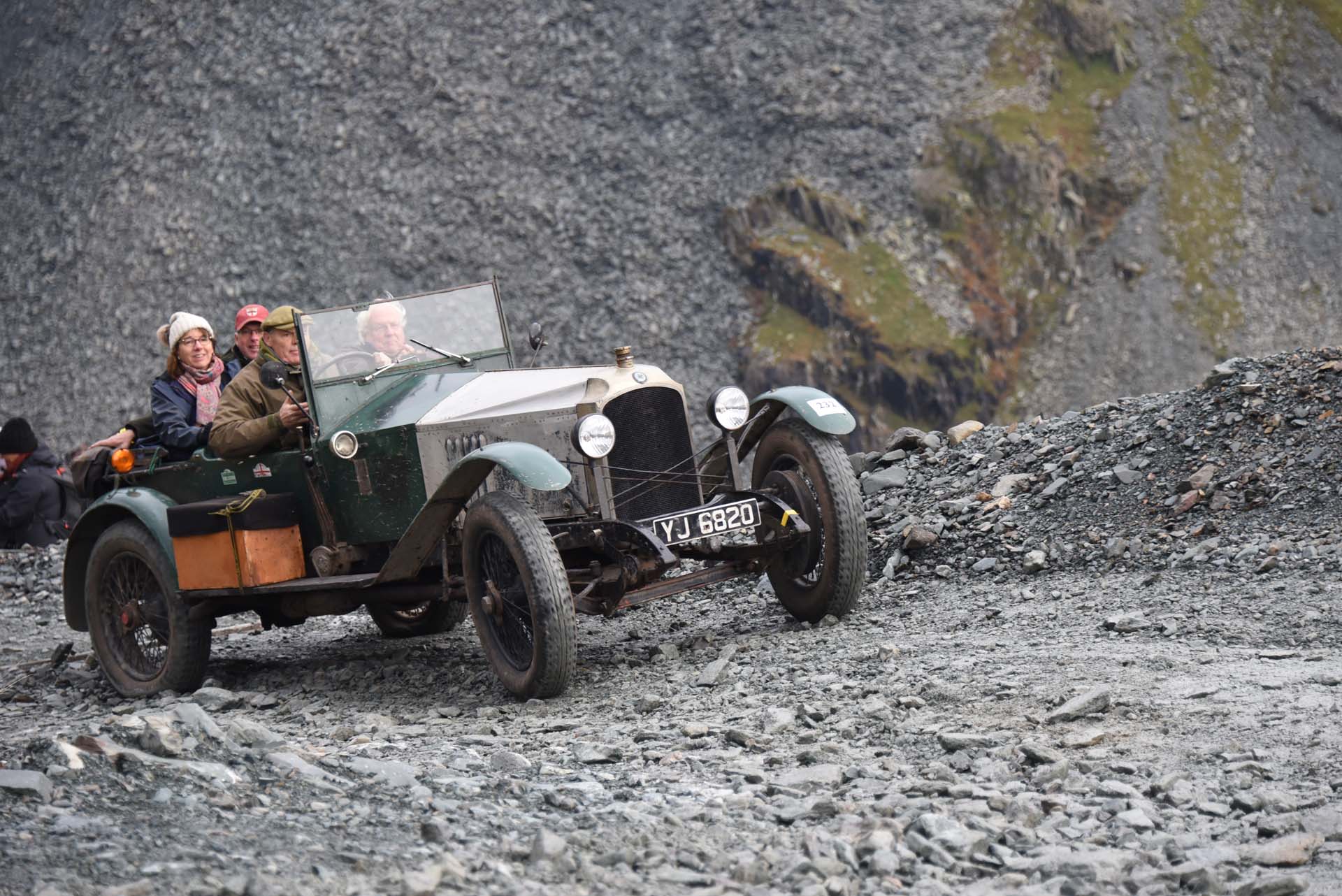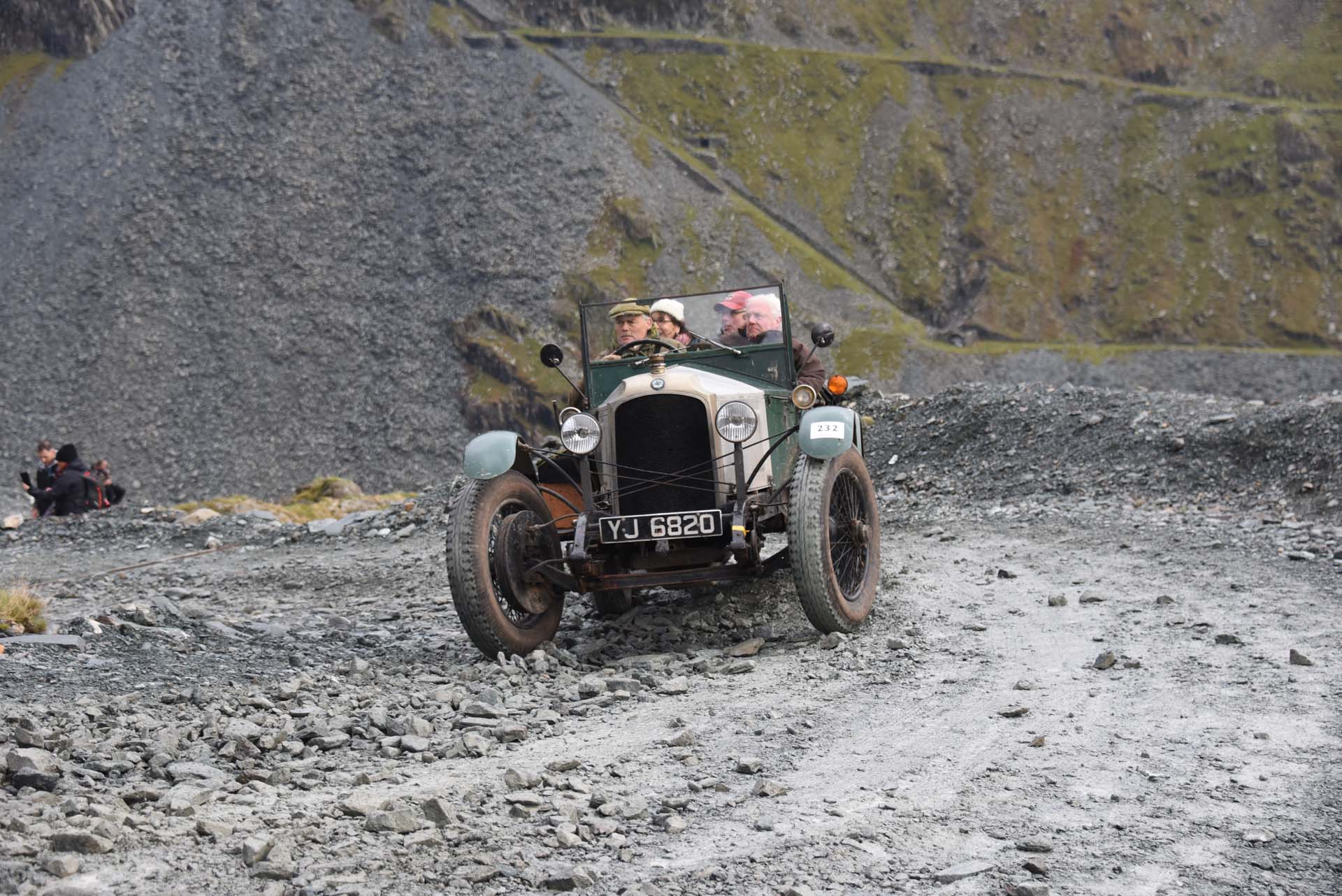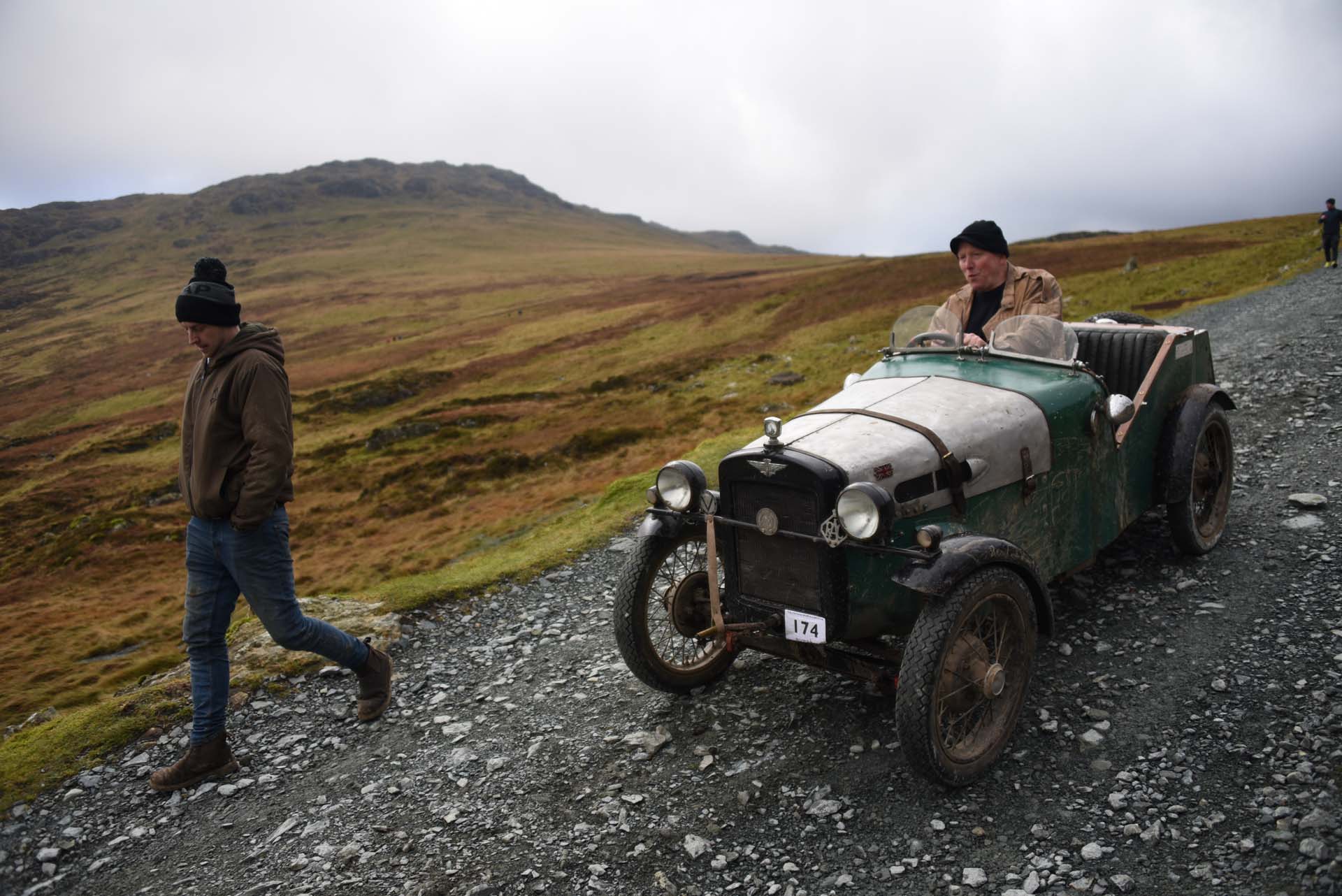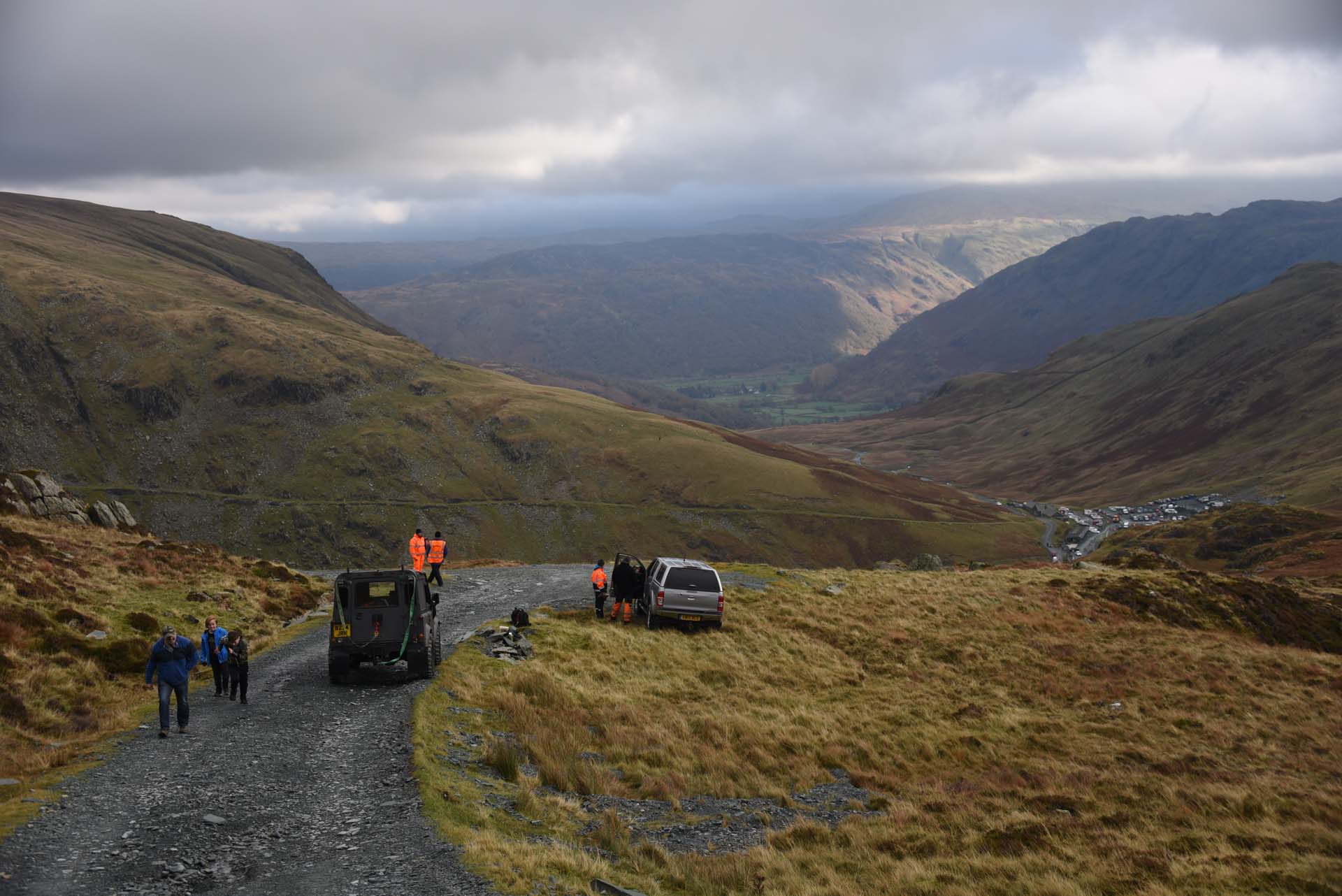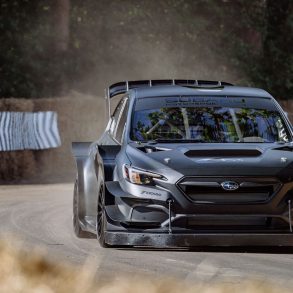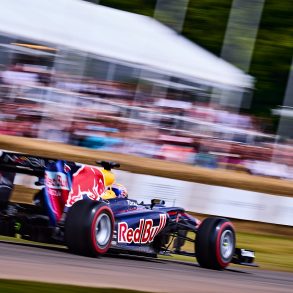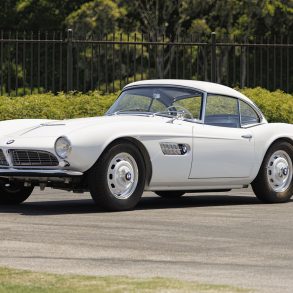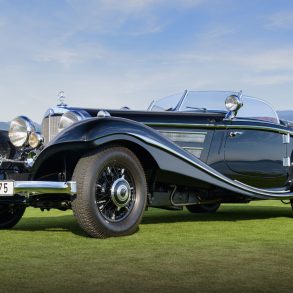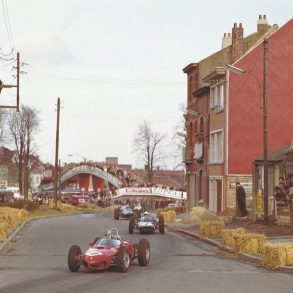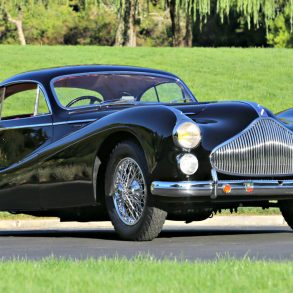Founded back in 1935 The Vintage Sports Car Club was intended to be for cars at least five years old; however this soon changed and it was decided to limit eligibility to cars constructed prior to December 31st 1930; this is the prime difference in the meaning of the word “Vintage” relating to cars between the UK and much of the rest of the world. These days cars from later periods are sometimes eligible for VSCC events but they are still not “Vintage” cars!
Since that time the Club has promoted a wide variety of events, interrupted only by WW2. If you are interested in the history of such things, this is a good place to start: https://www.vscc.co.uk/page/history
Sporting Trials have always been popular within the Club; in these events the object is to drive as far as possible along difficult off-road “Sections” and a number of these sections combine towards the trophies on offer. These events involve varying quantities of mud, water, steep gradients and sharp turns, every venue is different but the one I’m covering here is unique, in that there is no mud but there are a lot of rocks!
The Drum House section is a rough mine road situated in the English Lake District National Park and leads steeply (very!) upwards from the Honister Slate Mine buildings (almost) to a quarry at the top of the mountain, the surface is invariably loose and slippery and comprises rocks and stones varying from small gravel to quite large chunks.
The aim (as in all other trials sections) is to get as far as possible towards the end of the section, until either the car or driver(!) fails to proceed; the side of the tracks are marked by small numbered flags (like on a putting green) and points are recorded according to the amount of progress made. Stopping and re-starts are not allowed; if the vehicle reaches the top/end without stopping it is said to have “gone clean” although it actually will be far from clean by this stage! Cars will always have at least one passenger but it is quite normal for a four-seater to carry a full load; bouncing up and down can sometimes aid traction on slippery sections, so the more the merrier!
Mary Baxter in her 1930 Austin 7 Ulster Replica nears the top of the hill.
Grant Sellars’ 1936 Austin 7 Special makes steady upwards progress.
Flying helmets keep your ears warm! Andy Storer 1928 Austin 7 Tourer.
Johnathan Mellor and Navigator look what awaits them around the bend. 1930 Austin 7.
Mud is always a feature on VSCC Trials but not on this section, where it is all about gravel, rocks and even bigger rocks!
Matthew Moore opens the windshield for more fresh air! 1929 Austin 7 Chummy.
Mary Baxter peers out while her Navigator can’t bear to look!
Andy Johnson, 1924 Bugatti T13, probably the most valuable car on the day. Nice to see it being used for its original purpose: fun!
Keeping close company in the Bugatti- a real sports car.
Richard Baxter’s 1928 Chrysler 75, one of the larger cars with a full load and plenty of power.
Thomas Clynes’ 1930 Ford Model A swings through the turns making it look easy.
The big step (and big steep!) are no problem for the Fords.
Rebecca Smith’s very tidy Ford Model A Tudor cruises upwards to the top.
Liz Cawley clings on while husband Dougal monsters the hill in her car!
Dougal Cawley of Longstone Tyres wears appropriate dress to drive his wife’s Model A Ford.
David Golightly’s much modified Ford Model T attacking the final turns.
Peter Kite in his 1921 GN Sports; two cylinder engine and four-speed chain-drive!
Malcolm Gordon, in his 1929 Austin Chummy , takes his time descending back to the start at the mine.
Nearly there: Stuart Rich nears the top in his 1930 Austin Special. Look at the size of those boulders!
Dennis Bingham and his wife were champion side-car racers in their younger days at the isle of man TT races, etc. Still going strong in their Riley 12/4 special dating from 1936.
Martyn Quilter lifts a wheel in his 1930 Singer Junior Special, a popular sports car back in its day.
Having a good time is what VSCC Trialling is all about.
Mary Baxter takes it easy on the very slippery descent in her Austin.
Michael Power has a full crew in his 1923 Vauxhall 23-60, very popular larger sports cars when they were new.
Larger diameter wheels can be an advantage ovr the bigger loose rocks near the summit. Vauxhall 23-60.
Walking down: Richard Kibble’s navigator keeps him company on the descent. Crews are obliged to walk down due to ancient brakes and the steep slippery and loose surface. Cars with front brakes only have a Land Rover tied on behind to provide extra braking effort!
View from the top: showing the mountain scenery, with a view back to the start at the Honister Slate Mine. This is the end of the competitive section, the road beyond this point is passable only in the large quarry vehicles and on foot.
The quarry produces the unique green Lakeland slate which is used for both building and roofing materials. Evidence of mining from former times can be seen on the hills all around; all manner of minerals were extracted back in the day along with the slate.
Hopefully my photos will give you a flavour of how this rather eccentric event unfolds; I think the main aim is really to have as much fun as possible in an old car, rather than to take home a trophy, although that would be nice.
Looking through the list of entries it seems that this year the “newest” car dated from 1937 and the oldest from 1917, although in past years we have had entries built in the very early 1900s. This year there we a huge number of Austin 7s of various types; these have become increasingly popular mainly, I believe, due to their simplicity and low cost, as it is possible to have a lot of fun for a very small outlay of capital. This year there looked to be a trend away for the more exotic motors, I didn’t see a single Bentley, Lagonda or Invicta, for example, but there was a lonely Bugatti Brescia; in the past we’ve has T35s etc. Perhaps this is a reflection of the increase in value of these machines?
The various types of Ford Model A are also becoming more popular; while they were imported (and built) in the UK with right-hand drive, many of those seen today have been acquired from the USA with left hand drive. The represent very good value for money and were built to withstand the rigours of unpaved roads back in the day, making them ideal for trialling.
A full set of results can be found on the VSCC website can be found here: https://www.vscc.co.uk/page/events It’s worth having a good look at the VSCC web pages, there is a wealth of information and photos, etc on there. https://www.vscc.co.uk
I hope you enjoy this small selection of photographs, if you have any questions or suggestions, please contact me directly via:
www.petetaylor.org.uk


